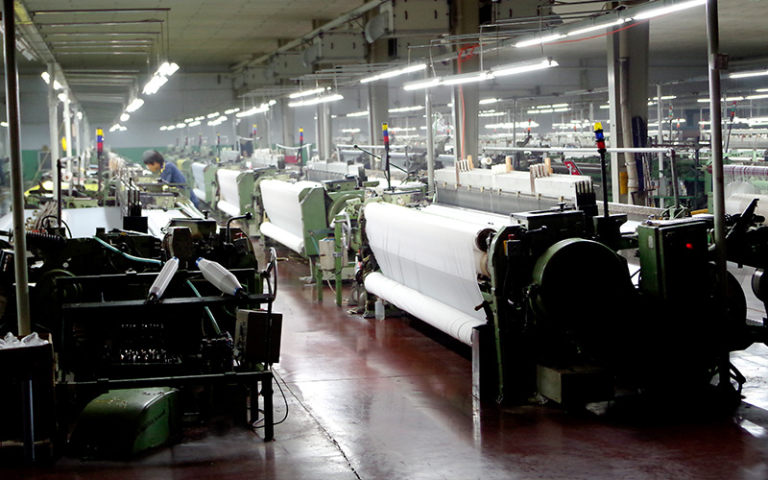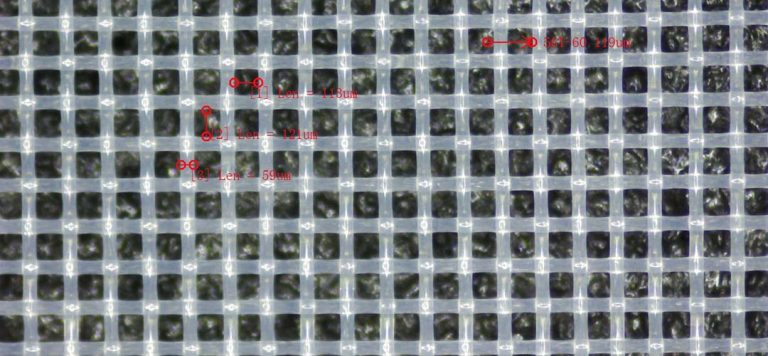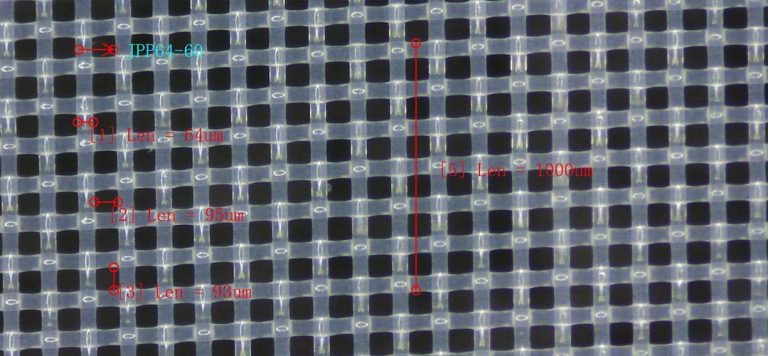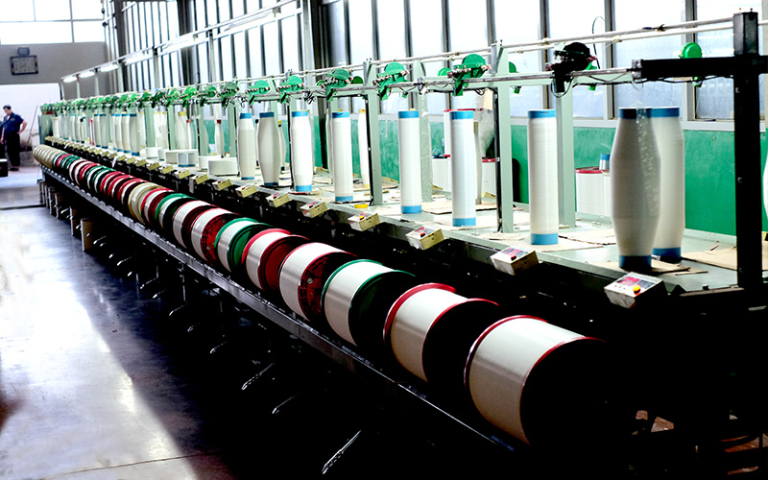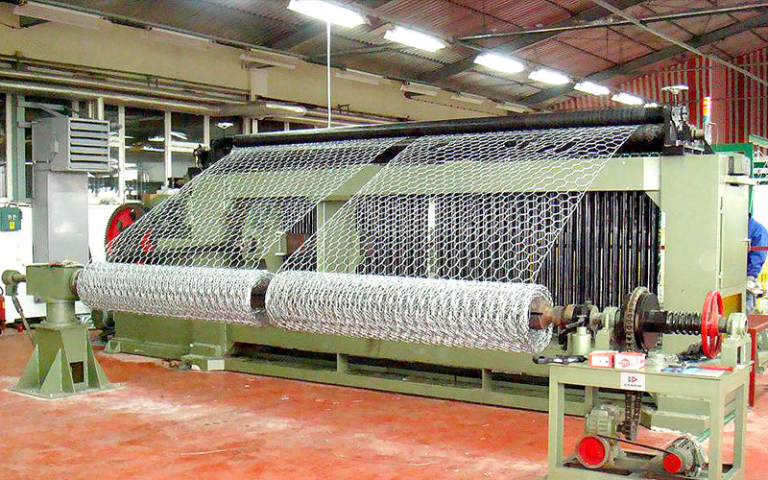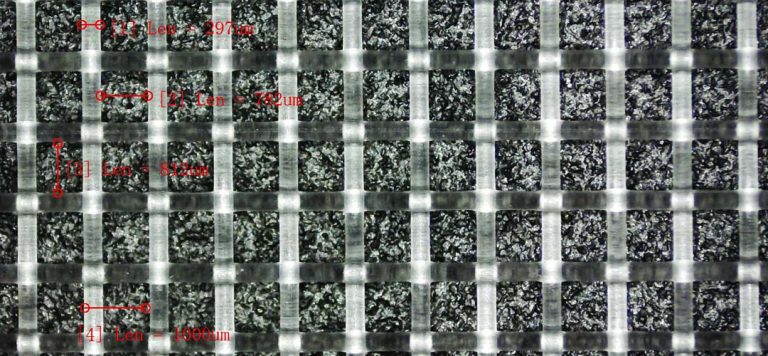Table of Contents
Material Considerations for nylon mesh Screens
When it comes to choosing the right nylon mesh screen for your needs, there are several important factors to consider. One of the most crucial aspects to think about is the material of the nylon mesh screen. Different materials can offer varying levels of durability, flexibility, and resistance to chemicals and abrasion. Understanding the material considerations for nylon mesh screens can help you make an informed decision when selecting the right screen for your specific application.
Nylon mesh screens are commonly used in a variety of industries, including filtration, screen printing, and food processing. The material of the nylon mesh screen plays a significant role in determining its performance and longevity. One of the key material considerations for nylon mesh screens is the denier of the nylon yarn. Denier refers to the thickness of the individual nylon fibers used to create the mesh screen. A higher denier indicates a thicker and stronger yarn, which can provide greater durability and resistance to wear and tear.
In addition to denier, the weave pattern of the nylon mesh screen is another important material consideration. The weave pattern refers to the way in which the nylon fibers are interlaced to create the mesh screen. Common weave patterns for nylon mesh screens include plain weave, twill weave, and Dutch weave. Each weave pattern offers unique characteristics in terms of strength, flexibility, and filtration efficiency. For example, a plain weave nylon mesh screen is typically more flexible and easier to clean, while a Dutch weave nylon mesh screen offers superior filtration capabilities and resistance to clogging.
Another material consideration for nylon mesh screens is the coating applied to the surface of the screen. Coatings can help enhance the performance of the nylon mesh screen by providing additional protection against chemicals, abrasion, and UV exposure. Common coatings for nylon mesh screens include polyurethane, PVC, and silicone. Polyurethane coatings are known for their excellent abrasion resistance and flexibility, making them ideal for applications that require frequent cleaning and handling. PVC coatings offer superior chemical resistance and durability, while silicone coatings provide excellent release properties and resistance to high temperatures.
| Model | Mesh Count (/cm) |
Mesh Count (/inch) |
Thread Dia (um) |
Mesh Opening (um) |
Thickness (um) |
Weight (g/m2) |
| NL4/1950 | 4 | 10 | 550 | 1950 | 1100 | 307 |
| NL5/1500 | 5 | 13 | 500 | 1500 | 1000 | 318 |
| NL6/1267 | 6 | 15 | 400 | 1267 | 800 | 244 |
| NL7/1079 | 7 | 18 | 350 | 1079 | 700 | 218 |
| NL8/900 | 8 | 20 | 350 | 900 | 700 | 249 |
| NL9/861 | 9 | 23 | 250 | 861 | 500 | 143 |
| NL9/811 | 9 | 23 | 300 | 811 | 600 | 206 |
| NL10/750 | 10 | 25 | 250 | 750 | 500 | 159 |
| NL10/700 | 10 | 25 | 300 | 700 | 600 | 229 |
| NL12/583 | 12 | 30 | 250 | 583 | 500 | 191 |
| NL12/533 | 12 | 30 | 300 | 533 | 600 | 274 |
| NL14/514 | 14 | 36 | 200 | 514 | 340 | 142 |
| NL16/425 | 16 | 40 | 200 | 425 | 340 | 160 |
| NL20/350 | 20 | 50 | 150 | 350 | 255 | 113 |
| NL20/300 | 20 | 50 | 200 | 300 | 340 | 200 |
| NL24/267 | 24 | 60 | 150 | 267 | 255 | 135 |
| NL28/237 | 28 | 70 | 120 | 237 | 204 | 101 |
| NL30/213 | 30 | 76 | 120 | 213 | 204 | 110 |
| NL32/213 | 32 | 80 | 100 | 213 | 170 | 80 |
| NL36/178 | 36 | 90 | 100 | 178 | 170 | 90 |
| NL40/150 | 40 | 100 | 100 | 150 | 170 | 100 |
| NL43/153 | 43 | 110 | 80 | 153 | 136 | 70 |
| NL48/128 | 48 | 120 | 80 | 128 | 136 | 77 |
| NL56/119 | 56 | 140 | 60 | 119 | 102 | 50 |
| NL64/96 | 64 | 160 | 60 | 96 | 102 | 58 |
| NL72/89 | 72 | 180 | 50 | 89 | 85 | 45 |
| NL80/75 | 80 | 200 | 50 | 75 | 85 | 50 |
| NL100/57 | 100 | 250 | 43 | 57 | 73 | 46 |
| NL110/48 | 110 | 280 | 43 | 48 | 73 | 52 |
| NL120/48 | 120 | 300 | 35 | 48 | 60 | 37 |
| NL120/40 | 120 | 300 | 43 | 40 | 73 | 55 |
| NL130/42 | 130 | 330 | 35 | 42 | 60 | 40 |
| NL130/34 | 130 | 330 | 43 | 34 | 73 | 61 |
| NL140/36 | 140 | 350 | 35 | 36 | 60 | 43 |
| NL157/25 | 157 | 400 | 43 | 25 | 73 | 74 |
| NL180/20 | 180 | 450 | 39 | 20 | 66 | 68 |
| NL200/15 | 200 | 500 | 39 | 15 | 66 | 76 |
| NL220/10 | 220 | 550 | 39 | 10 | 66 | 84 |
| NL240/5 | 240 | 600 | 39 | 5 | 66 | 91 |
When selecting a nylon mesh screen for your specific needs, it is important to consider the material considerations discussed above. By understanding the denier, weave pattern, and coating options available for nylon mesh screens, you can choose a screen that meets your requirements for durability, flexibility, and chemical resistance. Additionally, it is essential to consider the specific application requirements, such as filtration efficiency, particle size retention, and flow rate, when selecting a nylon mesh screen.
In conclusion, material considerations play a crucial role in determining the performance and longevity of nylon mesh screens. By carefully evaluating the denier, weave pattern, and coating options available for nylon mesh screens, you can choose a screen that meets your specific needs and requirements. Whether you are looking for a durable screen for industrial filtration or a flexible screen for screen printing, understanding the material considerations for nylon mesh screens can help you make an informed decision and achieve optimal results in your application.
Mesh Size and Weave Pattern Selection
When it comes to choosing the right nylon mesh screen for your specific needs, there are several factors to consider. One of the most important aspects to take into account is the mesh size and weave pattern of the screen. These two factors will determine the screen’s performance and suitability for your intended application.
Mesh size refers to the number of openings per linear inch in the mesh screen. The higher the mesh size, the smaller the openings in the screen will be. This is important to consider depending on the size of the particles or materials you are trying to separate or filter. For example, if you are working with fine powders or liquids, you will want a mesh screen with a higher mesh size to ensure that only the desired particles pass through.
On the other hand, if you are dealing with larger particles or materials, a lower mesh size may be more appropriate. It is essential to match the mesh size to the size of the particles you are working with to achieve the desired results. Additionally, consider the flow rate of the material through the screen when selecting the mesh size. A smaller mesh size may restrict the flow, while a larger mesh size may allow too much material to pass through.
In addition to mesh size, the weave pattern of the nylon mesh screen is another crucial factor to consider. The weave pattern refers to how the individual strands of nylon are interlaced to create the screen. There are several common weave patterns, including plain weave, twill weave, and Dutch weave, each with its own unique characteristics and benefits.
Plain weave is the most basic and common weave pattern, with each strand passing over and under the adjacent strands in a simple crisscross pattern. This weave pattern is ideal for general-purpose applications and offers good strength and durability. Twill weave, on the other hand, is characterized by a diagonal pattern created by the interlacing of the strands. This weave pattern provides increased strength and stability, making it suitable for more demanding applications.
Dutch weave is a unique weave pattern that features a combination of fine and thick strands woven together to create a dense and robust screen. This weave pattern is ideal for applications that require precise filtration and particle retention. When selecting a weave pattern, consider the specific requirements of your application, such as filtration efficiency, strength, and durability.
In conclusion, when choosing the right nylon mesh screen for your needs, it is essential to consider both the mesh size and weave pattern of the screen. These factors will determine the screen’s performance and suitability for your intended application. Match the mesh size to the size of the particles you are working with and consider the flow rate of the material through the screen. Additionally, select a weave pattern that meets the specific requirements of your application, such as filtration efficiency and strength. By carefully considering these factors, you can ensure that you choose the right nylon mesh screen for your needs.
Understanding Mesh Screen Durability and Lifespan
When it comes to choosing the right nylon mesh screen for your needs, one of the most important factors to consider is its durability and lifespan. Nylon mesh screens are commonly used in a variety of applications, including filtration, separation, and printing. Understanding the factors that affect the durability and lifespan of a nylon mesh screen can help you make an informed decision when selecting the right screen for your specific needs.
One of the key factors that determine the durability of a nylon mesh screen is the material from which it is made. Nylon is a synthetic polymer that is known for its strength and durability, making it an ideal material for mesh screens. However, not all nylon mesh screens are created equal. The quality of the nylon material used in the screen can vary, affecting its overall durability and lifespan.


In addition to the material used, the construction of the mesh screen also plays a significant role in its durability. The way in which the nylon fibers are woven together to create the mesh screen can impact its strength and longevity. Screens with a tighter weave are generally more durable and long-lasting than those with a looser weave. Additionally, screens that are properly tensioned and secured in their frames are less likely to stretch or warp over time, further increasing their durability.
Another factor to consider when evaluating the durability of a nylon mesh screen is the environment in which it will be used. Screens that are exposed to harsh chemicals, extreme temperatures, or high levels of abrasion are more likely to degrade quickly than those used in less demanding conditions. It is important to consider the specific conditions in which the screen will be used and choose a material and construction that can withstand those conditions.
When it comes to the lifespan of a nylon mesh screen, proper maintenance and care are essential. Regular cleaning and inspection of the screen can help prevent damage and prolong its lifespan. Screens that are not properly maintained may become clogged with debris, stretched out of shape, or otherwise compromised, leading to a shorter lifespan.

In conclusion, choosing the right nylon mesh screen for your needs requires careful consideration of its durability and lifespan. Factors such as the material used, construction of the screen, and environmental conditions in which it will be used all play a role in determining the longevity of the screen. By understanding these factors and taking proper care of your nylon mesh screen, you can ensure that it will continue to meet your needs for years to come.
Choosing the Right Nylon Mesh Screen for Specific Applications
When it comes to choosing the right nylon mesh screen for your specific needs, there are several factors to consider. Nylon mesh screens are commonly used in a variety of applications, including filtration, separation, and printing. The key to selecting the right nylon mesh screen lies in understanding the requirements of your particular application and choosing a screen that meets those requirements.
One of the most important factors to consider when choosing a nylon mesh screen is the mesh size. Mesh size refers to the number of openings per inch in the screen. The mesh size you choose will depend on the size of the particles or objects you are trying to separate or filter. For example, if you are filtering fine particles, you will need a screen with a smaller mesh size. On the other hand, if you are separating larger objects, a screen with a larger mesh size may be more appropriate.
Another important factor to consider is the mesh count. Mesh count refers to the number of threads per inch in the screen. A higher mesh count indicates a finer mesh screen, while a lower mesh count indicates a coarser mesh screen. The mesh count you choose will depend on the level of detail or resolution required for your application. For example, if you are printing fine details, you will need a screen with a higher mesh count. If you are simply filtering out large particles, a screen with a lower mesh count may be sufficient.
In addition to mesh size and mesh count, it is also important to consider the material of the nylon mesh screen. Nylon mesh screens are available in a variety of materials, including nylon, polyester, and polypropylene. Each material has its own unique properties and advantages. Nylon mesh screens are known for their durability and resistance to chemicals, making them ideal for applications where exposure to harsh chemicals is a concern. Polyester mesh screens are known for their high tensile strength and dimensional stability, making them ideal for applications where strength and stability are important. Polypropylene mesh screens are known for their resistance to moisture and abrasion, making them ideal for outdoor or wet applications.
When choosing a nylon mesh screen, it is important to consider the specific requirements of your application and select a screen that meets those requirements. Consider factors such as mesh size, mesh count, and material to ensure that you choose the right screen for your needs. By taking the time to carefully evaluate your requirements and select the appropriate nylon mesh screen, you can ensure that your application runs smoothly and efficiently.
In conclusion, choosing the right nylon mesh screen for your specific needs requires careful consideration of factors such as mesh size, mesh count, and material. By understanding the requirements of your application and selecting a screen that meets those requirements, you can ensure that your application runs smoothly and efficiently. Whether you are filtering, separating, or printing, choosing the right nylon mesh screen is essential for achieving optimal results.
Maintenance and Cleaning Tips for Nylon Mesh Screens
Nylon mesh screens are commonly used in a variety of applications, from filtration to screen printing. These screens are durable, flexible, and versatile, making them a popular choice for many industries. However, choosing the right nylon mesh screen for your specific needs can be a daunting task. There are several factors to consider when selecting a nylon mesh screen, including mesh count, thread diameter, and weave type. In this article, we will discuss some tips on how to choose the right nylon mesh screen for your needs.
One of the most important factors to consider when choosing a nylon mesh screen is the mesh count. Mesh count refers to the number of threads per inch in the screen. A higher mesh count indicates a finer screen, which is ideal for applications that require a high level of detail, such as screen printing. On the other hand, a lower mesh count is better suited for applications that require a coarser screen, such as filtration. When selecting a nylon mesh screen, it is important to consider the mesh count that will best suit your specific needs.
Another important factor to consider when choosing a nylon mesh screen is the thread diameter. Thread diameter refers to the thickness of the threads used in the screen. Thicker threads are more durable and can withstand higher pressures, making them ideal for applications that require a strong screen. However, thinner threads are more flexible and can provide a higher level of detail, making them suitable for applications that require precision. When selecting a nylon mesh screen, it is important to consider the thread diameter that will best suit your specific needs.
In addition to mesh count and thread diameter, it is also important to consider the weave type of the nylon mesh screen. There are several weave types available, including plain weave, twill weave, and Dutch weave. Each weave type has its own unique characteristics and is suitable for different applications. For example, plain weave screens are ideal for general-purpose applications, while twill weave screens are better suited for applications that require a higher level of strength. Dutch weave screens are ideal for applications that require a high level of filtration. When selecting a nylon mesh screen, it is important to consider the weave type that will best suit your specific needs.
When it comes to maintenance and cleaning of nylon mesh screens, there are several tips that can help prolong the life of the screen. One important tip is to regularly clean the screen to remove any debris or buildup that may clog the mesh. This can be done by gently rinsing the screen with water or using a mild detergent to remove any stubborn residue. It is also important to avoid using harsh chemicals or abrasive cleaners, as these can damage the screen and reduce its effectiveness.
Another important tip for maintaining nylon mesh screens is to store them properly when not in use. Nylon mesh screens should be stored in a cool, dry place away from direct sunlight and extreme temperatures. This will help prevent the screen from becoming brittle or discolored over time. Additionally, it is important to handle the screen with care to avoid tearing or stretching the mesh.
In conclusion, choosing the right nylon mesh screen for your needs requires careful consideration of factors such as mesh count, thread diameter, and weave type. By taking these factors into account, you can select a nylon mesh screen that will best suit your specific needs. Additionally, proper maintenance and cleaning of nylon mesh screens can help prolong their life and ensure optimal performance. By following these tips, you can ensure that your nylon mesh screen remains in top condition for years to come.

